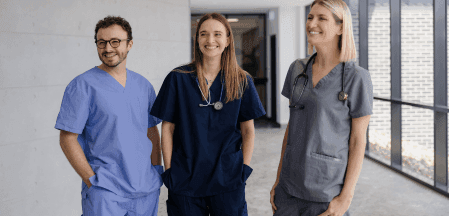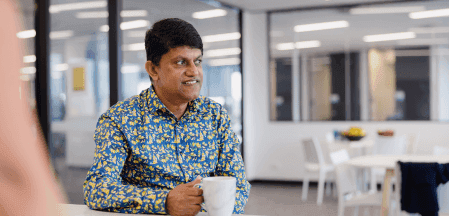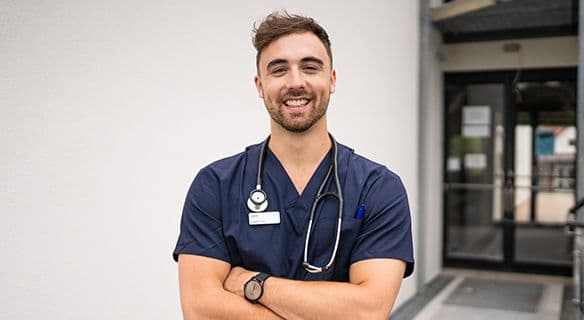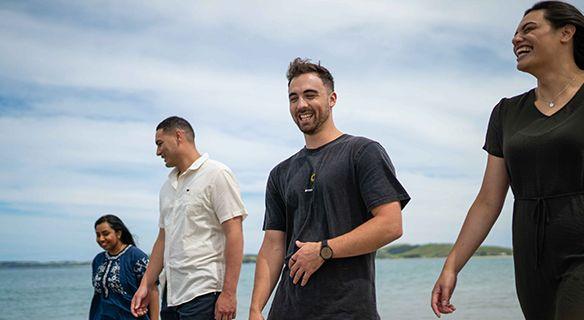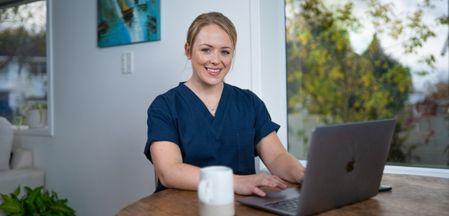Search over 2,000 Doctor Jobs in Australia and New Zealand.
Here to help doctors live the lives they want
Get time back for things you love outside of medicine, enhance your lifestyle, and reclaim your work-life balance. As Australasia's largest medical recruitment agency, we simplify the job search process, offering a free career-management service for doctors.
Search.
Search from the largest network of doctor jobs in Australia and New Zealand. You can search for permanent and locum roles in your grade and specialty, across both countries.
Register.
Register and be connected with your personal recruitment specialist. You'll let them know your goals - they’ll job search for you and negotiate you the best rates.
Relax.
Your recruitment team manage your applications, assist you with the paperwork and book your travel and accomodation. Our service is designed to save you time, so you can focus on practicing medicine.
No charges. Just great jobs.
Your journey is our priority, and that's why we are proud to offer our services completely free of charge. Allow us to alleviate the burden of paperwork, let us negotiate you the rates you deserve, and 90% of the time - we'll pay for your travel & accomodation. With Australasia's largest network of doctor jobs - we'll always find something to suit. Have a look for yourself, or simply get in touch - and we'll do the searching for you.
Locuming offers work on your terms.
Opportunity.
Explore diverse and interesting areas of medicine. Discover a new career path and try different working environments. Feel appreciated and share your time and skills with a community that needs your expertise.
Lifestyle.
Travel with your work. Thousands of placements are now available in hospitals, clinics and medical centres across Australia and New Zealand. Experience life in a different town, city or country. Spend more time doing the things you love, or with the people you love.
Flexibility.
Take control of where and when you work for a better work-life balance. Placements last anything from a few hours to a year. Make good money while considering your next move. We can show you ways of working that you may not have considered.
You can choose when you want to work, how long you want to work for and then you can choose when you go back. It’s enabled me to have more time to spend with the family.
Great way to locum. The staff were very engaging and prepared for every little element of the locum placement. Attention to detail and professionalism was second to none
Starting from the moment that I answered my phone, the whole team has been so amazing. They work hard for me to get whatever shifts I want.
Medical Recruitment Agency FAQs
We find our doctors locum placements or permanent (full-time) positions to suit your career or lifestyle goals. Our team of recruitment specialists takes care of the medical job search, pay negotiation, paperwork, and travel logistics - so you can focus on practicing medicine. We form strong relationships with the healthcare facilities to ensure a seamless match between doctors and institutions for the most mutually beneficial partnerships.
Medrecruit is doctor owned and operated recruitment agency, specialising in permanent and locum jobs. We are committed to connecting doctors with job opportunities that fit their career and lifestyle goals and our exclusive network of jobs across Australasia allows us to personalise each placement. Whether you're after long-term or short-term work, locum or permanent positions - we've got you covered.
Known as one of the best medical locum recruitment agencies in Australia and New Zealand, we're preferred suppliers to hospitals and health care practices across Australasia. This means we can get jobs to you before they've reached the market. Our recruiters and dedicated placement teams go the extra mile to deliver exceptional service and be the very best locum agency. Our consultants are experienced, knowledgeable and strong negotiators. They will find the right job for you at the best rate.
As a doctor recruitment agency, we work with medical doctors to help them find work in Australia and New Zealand. We have thousands of locum roles and full-time roles in hospitals and general practices across Australasia on our books. We specialise in doctor recruitment, so if you are a medical doctor looking for a new career in Australia or New Zealand we would love to help!
Locum work, also known as locum tenens positions, for medical doctors in Australia and New Zealand refers to temporary positions that provide flexibility in scheduling and diverse clinical experiences. Doctors can take on short-term assignments to cover staff shortages or fill in for colleagues on leave, often facilitated through locum agencies with expert locum recruiters. This allows them to gain exposure to various healthcare settings, enhance their skills, maintain a healthy work-life balance, and, oftentimes, earn more. Locum work is an excellent option for those seeking variety in their medical career or exploring different regions.
Working as a locum doctor in Australia and New Zealand presents a myriad of benefits. These positions offer flexibility, allowing doctors to tailor their schedules and explore diverse healthcare environments. With the assistance of locum agencies in Australia and New Zealand, doctors can seamlessly navigate the recruitment process, leveraging the expertise of recruitment agencies for medical staff to secure rewarding opportunities. Beyond flexibility, locum roles often boast competitive pay rates, free travel and accommodation, making them highly sought-after. By working with a trusted locum tenens agency, doctors gain access to a vast network of locum opportunities across various specialties and regions. Whether you're an experienced practitioner or seeking to embark on a new adventure, locum positions offer unparalleled flexibility and diversity in both Australia and New Zealand.
As an International Medical Graduate (IMG), working in New Zealand and Australia is indeed possible. However, it involves a structured process overseen by the respective medical councils. In Australia, the Medical Council of Australia manages the registration process, and in New Zealand, the Medical Council of New Zealand ensures that IMGs meet the required standards and qualifications. Partnering with a doctor recruitment agency like Medrecruit can help facilitate the transition process for IMGs, guiding them through the registration process and assisting in securing suitable placements. These agencies specialise in connecting doctors with opportunities across various healthcare settings, ensuring a smooth transition into working in New Zealand and Australia for IMGs seeking fulfilling careers in these countries. Head to this page for IMGs for more information on how Medrecruit can support.
